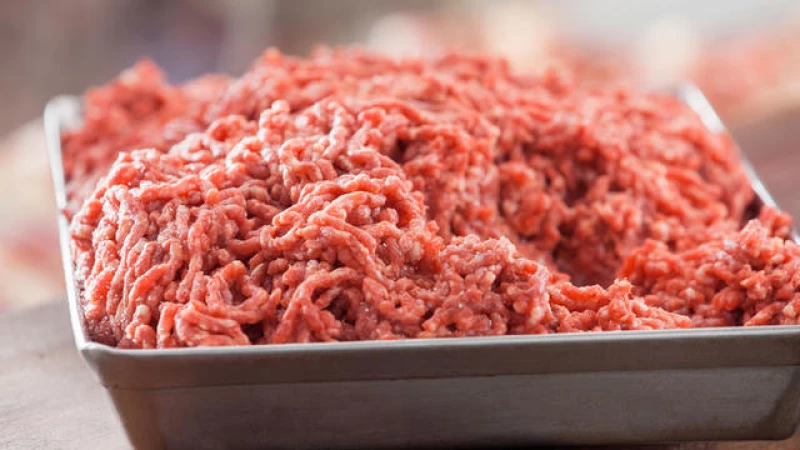Recent tests conducted on ground beef purchased at retail stores have come back negative for bird flu, according to an announcement made by the U.S. Department of Agriculture on Wednesday. The meat samples were collected from states where herds were affected by the unprecedented outbreak of the virus in cattle this year.
The department stated in a late Wednesday publication that these results "reaffirm that the meat supply is safe" after the completion of testing.
When questioned about the potential threat to meat eaters posed by this year's outbreak in dairy cattle, health authorities pointed to the "rigorous meat inspection process" overseen by the department's Food Safety Inspection Service (FSIS).
"FSIS inspects each animal before slaughter, and all cattle carcasses must pass inspection after slaughter and be deemed fit for human consumption," the department reassured.
A total of 30 ground beef samples were tested by the National Veterinary Services Laboratories. These samples were obtained from retail outlets in states with dairy cattle herds that had tested positive for the virus.
Reports indicate that dairy cattle in multiple states including Colorado, Idaho, Kansas, Michigan, New Mexico, North Carolina, Ohio, South Dakota, and Texas have tested positive for H5N1. This strain of avian influenza is known to be fatal to poultry and other animals, such as cats, although it has not had a significant impact on cattle apart from causing temporary disruptions in milk production.
The Department of Agriculture is currently awaiting further results regarding the presence of bird flu in beef. Samples taken from the muscle tissue of dairy cows that were deemed unfit for consumption at processing plants are undergoing testing for the virus. Additionally, experiments are being conducted to determine the effectiveness of cooking beef patties at various temperatures in eliminating the virus.
These investigations follow the USDA's decision to increase testing requirements for dairy cattle being transported across state borders as a precautionary measure in response to the outbreak.
Authorities have reported that this action was prompted by the discovery of a mutated strain of H5N1 in the lung tissue of an asymptomatic cow that was being prepared for slaughter. Although the cow was intercepted before entering the food chain by the Food Safety and Inspection Service (FSIS), officials have expressed concerns about the "isolated" case and how the virus may be spreading.
Signs of bird flu have also made its way into the retail dairy supply, with as many as one in five samples of milk coming back positive in a nationwide Food and Drug Administration survey.
The FDA has chalked those up to harmless fragments of the virus left over after pasteurization, pointing to experiments showing that there was no live infectious virus in the samples of products like milk and sour cream that had initially tested positive.
But the discovery has worried health authorities and experts that cows could be flying under the radar without symptoms, given farms are supposed to be throwing away milk from sick cows.
One herd that tested positive in North Carolina remains asymptomatic and is still actively producing milk, a spokesperson for the state's Department of Agriculture and Consumer Services told CBS News.
It remains unclear how H5N1 has ended up in the milk supply. Don Prater, the FDA's top food safety official, said Wednesday that milk processors "can receive milk from hundreds of different farms, which may cross state lines," complicating efforts to trace back the virus.
"This would take extensive testing to trace it that far," Bailee Woolstenhulme, a spokesperson for the Utah Department of Agriculture and Food, told CBS News.
Woolstenhulme said health authorities are only able to easily trace back milk to so-called "bulk tanks" that bottlers get.
"The milk in these bulk tanks comes from multiple dairies, so we will need to conduct tests on cows from all the dairies that contributed to the bulk tank," stated Woolstenhulme.







